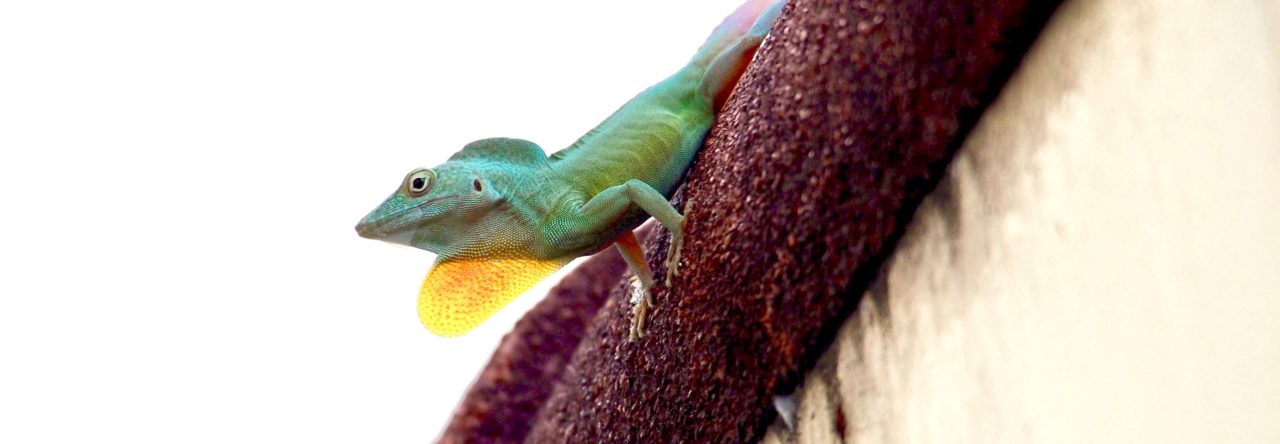In their recent paper on home range of A. equestris, Nicholson and Richards reported on a knight anole consuming a migrating blue-gray gnatcatcher. Here are the full details, in the words of Paul Richards:
“Kirsten Nicholson and I were attempting to resight one of our radio transmitter equipped A. equestris. Resighting transmitted individuals was difficult as they are hard to see even when we have a clear signal. We would regularly spend 15-20min search, and have a 50% change of resighting a transmitted individual (or less, I cannot remember – but we can probably estimate this from our notes). I saw a Blue-gray gnatcatcher land on a branch right in our general search area that was about a 2m diameter zone of the canopy of a small tree at about 3-5m height. I looked away continuing the search and seconds later I heard an alarm call, looked back to the spot and saw the A. equestris in the picture with the bird in its mouth. This A. equestris was unmarked, and I do not recall ever resighting the transmitted individual that we detected in the area. We can check our notes but I think it took at least 20min for this A. equestris to finish eating the gnatcatcher. I recall in using the branch to wipe/swipe its jaw across, one side the the other, repeatedly, to help get the bird in its mouth.”












